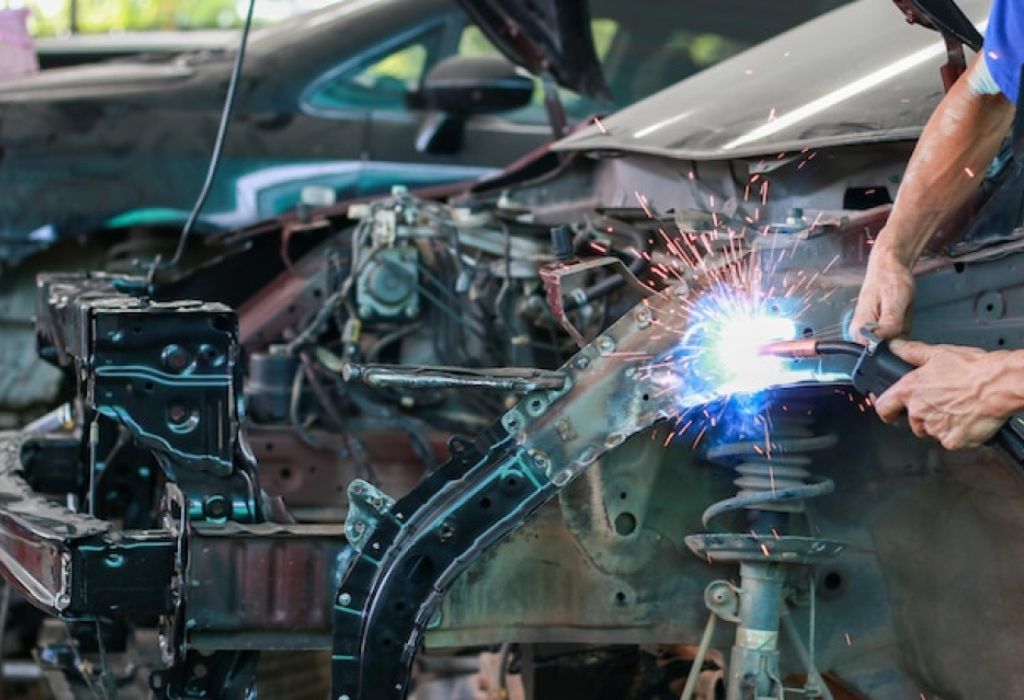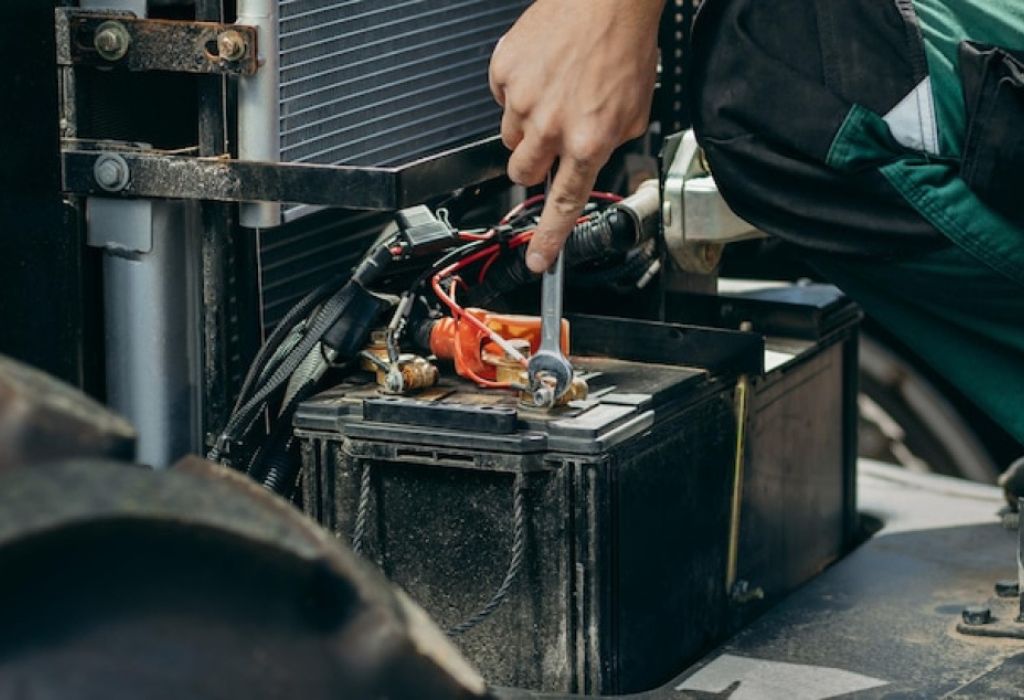Imagine your car battery dies unexpectedly, and the only equipment available is a welding machine. While it may seem like a quick solution, charging a car battery this way carries serious risks. Without careful attention, you risk overheating, explosion, or permanent battery damage.
A welding machine is designed to deliver high current to melt and join metal. Applying that current directly to a battery can produce heat that exceeds the battery’s tolerance, leading to swelling, venting of hazardous gases, or even rupture.
According to a 2023 DIY Safety Survey, 20% of battery accidents occur due to improper charging methods or unsafe use of tools (source). This underscores the importance of following proper safety protocols.
This guide provides a comprehensive overview of how to charge a car battery with a welding machine in an emergency. It emphasizes safety, correct technique, and monitoring, helping you minimize risk while achieving a temporary charge.
Understanding Car Batteries

Battery Types
Most vehicles use lead-acid batteries, which may be flooded, AGM (absorbed glass mat), or gel types. Each has specific charging tolerances and characteristics.
Flooded batteries require careful monitoring of electrolyte levels, while AGM and gel batteries are more sensitive to overcharging.
What is the most common car battery type?
Lead-acid batteries are standard for most vehicles.
Can all battery types be charged with a welding machine?
No, only 12V lead-acid batteries can be safely charged with controlled current.
Why monitor battery chemistry?
Different chemistries handle heat and current differently, affecting safety and effectiveness.
Voltage and Capacity Basics
Car batteries are typically 12 volts, with a fully charged battery reaching 12.6V to 14.4V. Battery capacity, measured in amp-hours (Ah), determines how much current it can safely absorb.
What is a nominal battery voltage?
12 volts for most standard car batteries.
How does battery capacity affect charging?
It dictates the safe current for charging and prevents overheating.
Welding Machine Basics for Charging
Types of Welding Machines
Welding machines come in stick (SMAW), MIG, TIG, and inverter models, each with different current output characteristics. Stick and inverter machines are most commonly considered for emergency charging.
Voltage and Amperage Control
High current output can easily exceed a battery’s safe charging range. Recommended safe amperage is typically 5–10% of the battery’s Ah rating.
Can any welding machine be used for charging?
No, only machines capable of low, controllable current are safe.
What is the safe amperage for a 60Ah battery?
Approximately 3–6 amps (5–10% of capacity).
What happens if voltage is too high?
The battery can overheat, vent gas, or rupture.
Can reverse polarity cause damage?
Yes, it can destroy the battery and damage the welding machine.
Understanding the Risks
Using a welding machine improperly can cause:
- Overheating and venting of hydrogen gas
- Explosion due to pressure build-up
- Damage to internal battery components
- Fire or sparks if safety precautions are ignored
Step-by-Step Charging Procedure
Preparation
- Wear safety goggles, gloves, and protective clothing.
- Place the battery on a stable, insulated surface.
- Clean battery terminals to remove corrosion.
Should the battery be removed from the car?
Yes, it’s safer to charge externally when possible.
Is ventilation necessary?
Yes, to dissipate hydrogen gas released during charging.
Connecting the Welding Machine
- Connect the positive output to the battery’s positive terminal.
- Connect the negative output to the battery’s negative terminal.
- Double-check polarity before powering on.
Can incorrect polarity cause harm?
Yes, it can cause sparks, damage, or battery explosion.
Charging Process
- Set the welding machine to the lowest current setting.
- Monitor the battery voltage and temperature continuously.
- Charge slowly, checking for overheating or swelling.
- Limit the charging duration to prevent overcharging.
How long does it take to partially charge?
30–60 minutes depending on battery capacity and machine output.
How to monitor safely?
Use a multimeter to track voltage and current.
Safety Precautions

- Always wear protective equipment to prevent acid burns or sparks.
- Ensure the area is well-ventilated to avoid hydrogen gas accumulation.
- Avoid flammable materials nearby.
- Never leave the battery unattended while charging.
Why is ventilation important?
Hydrogen gas is highly flammable and can ignite easily.
Can sparks cause an explosion?
Yes, sparks near venting gas are extremely dangerous.
Is constant monitoring necessary?
Yes, it prevents overheating and detects problems early.
Common Mistakes and How to Avoid Them
- Using excessive current or voltage.
- Ignoring polarity or connecting cables incorrectly.
- Charging in enclosed or poorly ventilated spaces.
- Failing to monitor battery temperature.
What happens with too much current?
The battery can overheat, swell, or explode.
Can reverse connections damage the battery?
Yes, polarity mistakes can cause permanent damage.
Why avoid enclosed spaces?
Hydrogen gas buildup increases the risk of fire or explosion.
Alternatives and Emergency Tips
- Proper battery chargers are safer and more efficient.
- Jumper cables with another car may be safer in emergencies.
- Only use welding machine charging as a last-resort emergency method.
Is a welding machine recommended for regular charging?
No, it should only be used in emergencies.
Are standard battery chargers safer?
Yes, they regulate voltage and current precisely.
Post-Charging Maintenance

- Allow the battery to cool before reconnecting to the vehicle.
- Check voltage with a multimeter to ensure adequate charge.
- Inspect electrolyte levels and refill distilled water if needed.
- Clean terminals and ensure proper connections for future use.
How to maintain after charging?
Inspect and clean terminals, test voltage, and monitor performance.
Can repeated emergency charging damage the battery?
Yes, frequent overcurrent or heat exposure reduces lifespan.
Conclusion
Charging a car battery with a welding machine is only suitable for emergencies. Following safety precautions, monitoring current and voltage, and understanding the risks are essential. Whenever possible, use a proper battery charger to ensure safety, efficiency, and battery longevity.
By adhering to these guidelines, you can safely provide an emergency charge to a dead battery without risking injury or damaging the battery permanently.

I’m Darrell Julian, the founder, lead writer, and hands-on welding enthusiast behind ArcWeldingPro.com. With more than 15 years of real-world welding experience, I created this platform to share what I’ve learned in the field, in the shop, and in the heat of the arc.


